3D dental imaging is the most modern and accurate radiographic diagnostic method used in dentistry. It is also called CBCT, which stands for Cone Beam Computed Tomography,referring to a computerized tomography system that has the diagnostic potential of radiology in three dimensions and is derived from a series of two-dimensional X-ray images. The range of applications for this type of image is extremely wide – in oral surgery, endodontics, orthopedics of the jaws, and even in maxillofacial surgery and otolaryngology. It is indispensable when planning and placing dental implants and large jaw reconstructions.
3D dental imaging is used when conventional 2D methods are not sufficient for diagnosing or planning interventions. CBCT is said to elevate diagnostic capabilities to a higher level and has a number of advantages compared to medical CT. The image you get in this way is extremely precise and uses technology similar to a medical scanner, except that it should be noted that the level of radiation is incomparably lower. Therefore, unlike orthopan, which is the most common type of imaging, 3D is used for more detailed and precise diagnosis.
Unlike an orthopan image, 3D dental imaging retains the relationship of structures, meaning it does not convert them into two dimensions but represents them three-dimensionally - height, length, and width of the bone. It is used in oral surgical procedures, the installation of dental implants, tooth treatments, etc. Imaging takes less than a minute, but the processing of the image takes a bit longer due to the complexity of the image. Before imaging, it is necessary to remove all metal from the head and neck area (necklaces, earrings, etc.) and to remain still during the imaging to ensure the highest quality image. This detailed insight into the anatomical structures of the upper and lower jaws includes bones, teeth, nerves, and soft tissues and thanks to a very precise and detailed image, it is possible to create an optimal treatment plan for each patient. Imaging is short, as is the development of the image, and it can be saved in digital form. The radiation dose in 3D dental imaging is minimal, and the imaging is performed in the comfortable atmosphere of our clinic.

